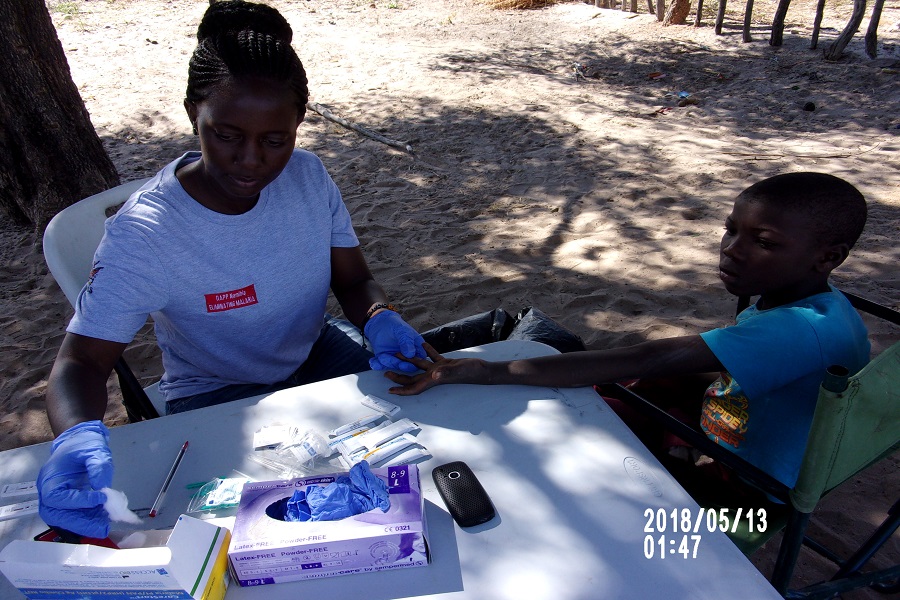Contribution towards Zero elimination of Malaria in Southern Africa
The Elimination 8 (E8) initiative includes Angola, Botswana, Mozambique, Namibia, South Africa, Swaziland, Zambia and Zimbabwe with interventions aimed at elimination of Malaria in most southern countries and better control of Malaria in boarding countries. This initiative is funded by the Global Fund to fight HIV/AIDS, TB and Malaria. DAPP Namibia is part of the E8 cross border consortium along the Namibian – Angolan border with two organizations in Namibia and three operating on the Angolan side of the border in cooperation with the Ministry of Health and Social Services in both countries.
The principal objective/strategy of the project activities is to contribute to the pre-elimination of Malaria in Namibia and contribute to better control of Malaria in the southern part of Angola. The strategy consists of testing, diagnosing, treatment, information and surveillance of Malaria through community mobilization, mobile, and stationary health services in close cooperation with health authorities.



Areas of Implementation: At the Katwitwi border crossing DAPP Namibia is operating a Malaria Plus Health Clinic, where people crossing the border are invited for testing and treated on the spot when diagnosed with Malaria. The Malaria Basic Team is mobile and operates with a driver, a nurse, and a community health worker. The team does information campaigns and offers to test at an informal river crossing sites, where on the spot treatment is done for those tested positive for Malaria. In this way, the surveillance team helps to stop the spread of Malaria between bordering countries.
The 3 Surveillance Teams are mobile and operate with a bakkie, a driver, a nurse, and an environmental health officer. Surveillance team brings a folding table, chairs, a gazebo, test kits, medication, water testing materials, spraying materials and safety gear in the back of the car. Surveillance is an observation of breakout cases. When informed by a nurse in charge that at a certain village one or more people came to the clinic with Malaria, the surveillance team will go to that village and set up the testing unit under a tree; then invite all people in a radius of 100 meters from the household where Malaria was found for testing and treatment on the spot if they are diagnosed with Malaria. At the same time, the environmental health officer will assess the area with the headman or other villagers for stagnant water where mosquitos might breed and take action with cleaning and spraying if mosquito larvae are found.
" It is good that everyone is tested, and those who were tested positive were treated. It is also good that people do not have to go to the hospital and get tested and they did not spend any cent” said a community member when asked whether the project has brought change to the area.
344 26 people tested in 2019.



